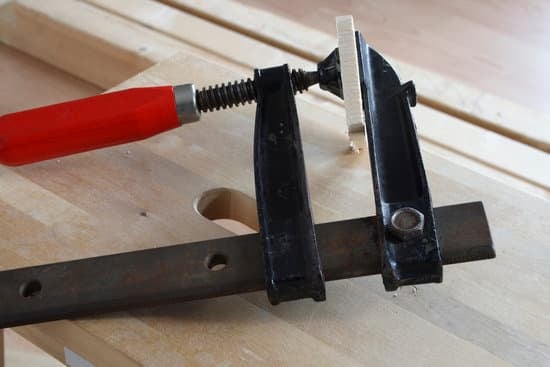Are you looking to spruce up your home with a simple yet effective improvement? Learning how to replace a window screen for home improvement can make all the difference in enhancing the overall look and functionality of your windows. Window screens play an important role in providing ventilation, blocking insects, and adding curb appeal to your home. By replacing old, damaged, or worn-out screens, you can significantly improve the aesthetic appeal and functionality of your windows.
When it comes to home improvement, one often overlooked aspect is the condition of window screens. However, with the right tools and materials, replacing window screens can be a simple and cost-effective way to upgrade your home.
In this article, we will guide you through the process of selecting the right type of screen for your needs, as well as providing step-by-step instructions on how to remove old screens, measure and cut new ones, and install them properly.
Whether you want to enhance the appearance of your windows or improve their functionality by allowing fresh air in while keeping bugs out, learning how to replace a window screen is an essential skill for any homeowner. With our comprehensive guide, you will be able to tackle this DIY project with confidence and achieve professional-looking results that will make a noticeable difference in your home’s appearance.
Types of Window Screens
When it comes to replacing a window screen for home improvement, it is important to consider the different types of window screens available in the market. Each type has its own set of advantages and disadvantages, so choosing the right one for your home is crucial in achieving the desired look and functionality.
Traditional Fiberglass Screens
One of the most common types of window screens is traditional fiberglass screens. These are affordable and offer good visibility and airflow. However, they can be prone to damage from pets or children, and may need more frequent replacement.
Pet-Resistant Screens
For homeowners with pets, pet-resistant screens are a great option. These screens are reinforced with a vinyl coating that makes them more durable against scratches and tears caused by pets. While they may be a bit more expensive than traditional fiberglass screens, they can save money in the long run by needing fewer replacements.
Solar Screens
If you want to reduce heat gain and glare in your home, solar screens are an excellent choice. These screens are designed to block out excess sunlight and UV rays, making them ideal for rooms that get a lot of direct sunlight. They provide energy savings by reducing cooling costs during hot weather.
Tools and Materials Needed
When it comes to replacing a window screen for home improvement, having the right tools and materials is essential for a successful project. Before you begin, gather the following items: a flathead screwdriver, utility knife or scissors, spline roller tool, measuring tape, replacement screen material (such as fiberglass or aluminum), spline (the rubber cord that holds the screen in place), and a new window screen frame if necessary.
The flathead screwdriver will be used to remove the old spline and screen from the frame, while the utility knife or scissors will be needed to cut the replacement screen material to size. The spline roller tool is crucial for properly securing the new screen into the frame with the new spline. Additionally, accurate measurements of the window frame will ensure that the replacement screen fits correctly, so make sure to have a measuring tape on hand.
When choosing replacement screen material, consider factors such as durability and visibility. Fiberglass screens are cost-effective and provide good outward visibility, while aluminum screens are more durable but may obstruct visibility slightly. Once you have all of these tools and materials ready, you can move on to removing the old window screen and preparing for installation of the new one.
It’s important to note that some window screens may require specific tools or materials depending on their design, so always consult with a professional if you’re unsure about what’s needed for your particular type of window screen. Proper preparation with the right tools and materials will ensure a smooth process when replacing your window screens for home improvement.
Removing the Old Window Screen
When it comes to home improvement, replacing old and damaged window screens can make a significant difference in the overall appearance and functionality of your home. Whether it’s for aesthetic purposes or to keep insects out, knowing how to replace a window screen is an essential skill for any homeowner. In this section, we will provide a step-by-step guide on properly removing the old window screen to prepare for installing a new one.
To begin the process of removing the old window screen, you will need the following tools and materials:
- Screwdriver
- Utility knife
- Replacement screen material
- Spline roller
Now that you have gathered all the necessary tools and materials, follow these steps to remove the old window screen:
- Use a screwdriver to carefully remove any screws or hardware holding the existing screen in place.
- Once the fasteners are removed, gently push on the frame from inside to pop it out of its track.
- Lay the frame down on a flat surface and use a utility knife to cut and remove the spline – which is a rubber or vinyl cord that holds the screen in place.
- Carefully remove the old screen from the frame, ensuring not to damage or bend it if it can be reused.
By following these step-by-step instructions, you can easily remove an old window screen and prepare for installing a new one. Remember to handle the old screen with care as you may be able to use it as a template when measuring and cutting your new replacement screen.
Measuring and Cutting the New Screen
When it comes to replacing a window screen for home improvement, one of the most crucial steps is measuring and cutting the new screen to fit the window frame properly. An accurately measured and cut screen ensures a perfect fit and enhances the overall appearance of your windows. In this section, we will provide detailed instructions on how to measure and cut the new screen for a seamless replacement process.
Before you begin measuring the new screen, make sure to take accurate measurements of the window frame. Use a tape measure to determine the width and height of the opening where the screen will be installed. It’s important to measure both dimensions precisely to avoid any gaps or overlapping when installing the new screen.
Once you have obtained accurate measurements, transfer them onto the new screen material using a pencil or marker. Carefully mark where you need to cut the screen, ensuring that it aligns with the measurements of the window frame. Use sharp scissors or a utility knife to cut along the marked lines, following a straight path to achieve clean edges.
After cutting the new screen to size, double-check the measurements before proceeding with installation. It’s essential to ensure that the new screen fits snugly within the window frame without any excess material hanging over. Taking these careful steps in measuring and cutting will guarantee a professional-looking finish for your newly replaced window screens.
By following these detailed instructions on how to measure and cut a new window screen, you can achieve a perfect fit for your replacement project. Paying close attention to accuracy and precision during this step is key in ensuring that your newly installed screens enhance both aesthetics and functionality in your home.
Installing the New Screen
Once you have removed the old window screen and measured and cut the new screen to fit the window frame, it’s time to install the new screen. Follow these step-by-step instructions for a successful installation:
- Begin by placing the new screen material over the frame, ensuring that it overlaps the frame on all sides by at least half an inch. This will ensure a secure fit and prevent any gaps where insects can enter.
- Use a flat spline tool to press one end of the spline into the corner of the frame groove. Gently push or roll the spline into position along one side of the frame, making sure that it pulls the screen taut as you go.
- Once you have secured one side of the screen with the spline, repeat this process for each remaining side of the frame until all four sides are tightly secured.
- After securing all four sides, use a utility knife to carefully trim off any excess screen material and spline from around the edges of the frame.
- Finally, give your newly installed window screen a final check to ensure it is securely in place and free from any rips or tears before re-installing it onto your window.
By following these steps closely, you can successfully install a new window screen and improve both the appearance and functionality of your home’s windows.
Tips and Tricks for a Perfect Fit
Replacing a window screen is an important aspect of home improvement that can significantly enhance the aesthetic appeal and functionality of your windows. When done correctly, it can improve ventilation, keep insects out, and create a more pleasant indoor environment. In this section, we will provide helpful tips and tricks to ensure that the new screen fits perfectly and securely, allowing you to enjoy the benefits of a well-fitted window screen.
Firstly, it is crucial to measure the window accurately before cutting the new screen. Use a tape measure to obtain precise dimensions, ensuring that there is enough material to cover the entire frame with some extra allowance for securing the screen in place. Additionally, investing in a high-quality fiberglass or aluminum screen material can contribute to a perfect fit due to their durability and flexibility.
When installing the new screen onto the window frame, it is important to use proper techniques to prevent sagging or wrinkling. Start by placing the new screen over the frame and using a roller tool to press it into the grooves around the perimeter. Ensure that there are no gaps or overlaps that could compromise its integrity.
Lastly, consider adding reinforcement such as spline or rubber cord around the edges of the new screen for added security. This additional step can help keep the screen taut and secure within the frame, preventing it from coming loose or shifting over time.
| Tips for Perfect Fit | Securely Fitting Techniques |
|---|---|
| Measure window accurately | Use roller tool to press new screen into grooves |
| Invest in high-quality screen material | Add reinforcement around edges for added security |
Maintenance and Care
In conclusion, replacing a window screen is a simple yet effective way to improve the overall look and functionality of your home. By following the steps outlined in this guide on how to replace a window screen for home improvement, you can easily upgrade the appearance of your windows and enhance the ventilation in your living space. Additionally, with proper maintenance and care, your new window screen will remain in top condition for years to come.
After successfully installing a new window screen, it is important to perform regular maintenance to ensure its longevity. This includes periodic cleaning to remove dust, dirt, and debris that may accumulate on the screen surface. It is also recommended to inspect the screen for any signs of damage or wear and tear, such as tears or holes, so that they can be promptly repaired or replaced as needed.
By taking the time to properly maintain and care for your new window screen, you can enjoy continued benefits such as improved airflow, protection from insects, and an aesthetically pleasing view from inside your home. With these simple maintenance tips, you can make the most of your investment in replacing your window screens and keep them looking and functioning like new for years to come.
Frequently Asked Questions
Can You Replace Window Screens Yourself?
Yes, you can replace window screens yourself with the right tools and materials. It’s a relatively simple process that involves removing the old screen, measuring the new one, and then installing it into the frame.
Can You Replace a Window Screen From Inside the House?
Yes, you can replace a window screen from inside the house if the window is designed to allow for easy removal of the screen. Many modern windows have screens that can be easily removed and replaced from inside.
Is Replacing a Window Screen Hard?
Replacing a window screen is not particularly hard, but it does require some manual dexterity and attention to detail. You will need to measure accurately, use a spline roller to secure the new screen, and ensure it fits snugly into the frame. With patience and care, it can be done successfully by most people.

I’m thrilled to have you here as a part of the Remodeling Top community. This is where my journey as an architect and remodeling enthusiast intersects with your passion for transforming houses into dream homes.





